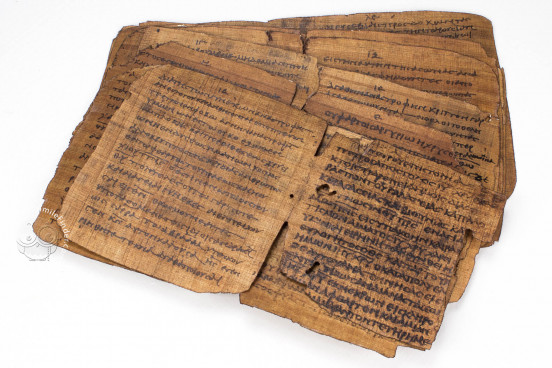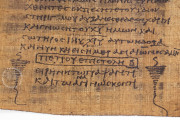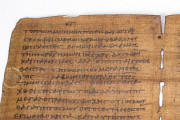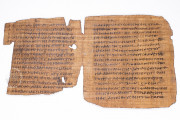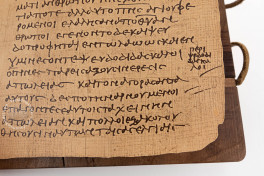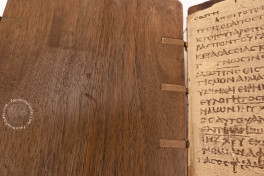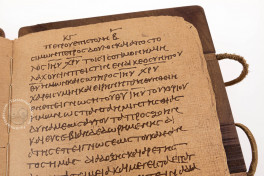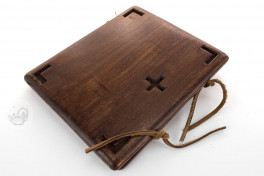The gathering of thirty-six papyrus pages known as Bodmer VIII Papyrus 72 was originally part of a larger work known as the Bodmer Miscellaneous Codex, an Egyptian manuscript dating to the third and fourth centuries. The pages are the oldest and most complete versions of the New Testament texts known as the First and Second Letters of Peter. They are written in Greek uncial over seventeen lines per single-columned page with creative pen flourishes used to visually demarcate the end of 1 Peter.
The manuscript may have been written in Alexandria due to its affinity with other manuscripts of a similar date, but it could have been copied by a local scribe. It serves as an important survivor of a pivotal time in the expansion of early Christianity and provides insight into the ways in which key writings of the new faith were created and disseminated to the faithful.
Two Letters from Peter the Apostle
Among the apostles, Peter held a central position being one of the first called and serving as a witness to key events of Gospels. Born as Simon, a fisherman, the name Peter is given by Jesus, who says of him, "Upon this rock (petrus) I will build my Church."
1 Peter is a circular letter to the faithful of Asia Minor imparting encouragement and solidarity to the minority communities of the new Christian faith whereas 2 Peter is a missive to a Christian community troubled by a false teacher and provides advice to the faithful to focus upon the promise of the Scripture and not on the character of those who would deliver it.
Part of a Collection of Early Christian Literature
Although the patronage for the Bodmer Miscellaneous Codex is unknown, given the variety of the biblical and ancillary texts, it is assumed the portions of the book were produced for a wealthy Christian Egyptian perhaps over a period of years. Thus the work serves not as a single, harmonious document but rather a collection of writings that may have held some specific personal meaning for the patron(s).
Because Christianity was illegal in the Roman Empire when this papyrus was written, it is possible that the patron selected writings useful for personal piety and reflection.
A Rare Book Made from Papyrus
The use of papyrus for books is uncommon due to the friable nature of papyrus. Made from the pith of reeds that have been sliced and pressed together, it tends to break if folded and refolded, as would happen in a codex. Because parchment has greater flexibility, it became the standard material for the pages of books.
The origins of the Bodmer Miscellaneous Codex are unknown. The Swiss collector, Martin Bodmer, purchased the book at an Egyptian antiques market and donated the quires of the epistles of Peter to the Vatican in 1969.
We have 3 facsimiles of the manuscript "Epistles of Peter":
- Beati Petri Apostoli Epistulae. Ex Papyro Bodmeriana VIII facsimile edition published by TREC Edizioni Pregiate, 1978
- Papiro Bodmer VIII facsimile edition published by Testimonio Compañía Editorial, 2003
- Epístolas de San Pedro (Papiro Bodmer VIII) facsimile edition published by Vicent Garcia Editores, 1986


